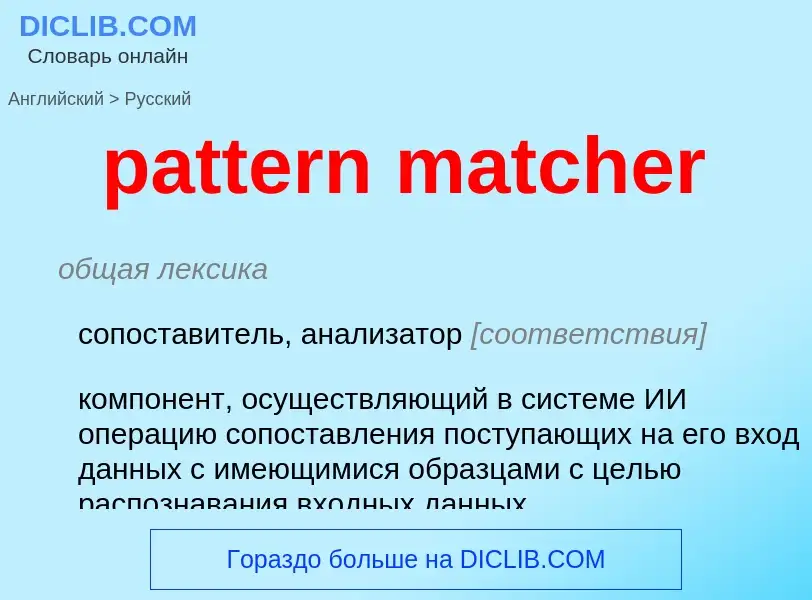ترجمة وتحليل الكلمات عن طريق الذكاء الاصطناعي ChatGPT
في هذه الصفحة يمكنك الحصول على تحليل مفصل لكلمة أو عبارة باستخدام أفضل تقنيات الذكاء الاصطناعي المتوفرة اليوم:
- كيف يتم استخدام الكلمة في اللغة
- تردد الكلمة
- ما إذا كانت الكلمة تستخدم في كثير من الأحيان في اللغة المنطوقة أو المكتوبة
- خيارات الترجمة إلى الروسية أو الإسبانية، على التوالي
- أمثلة على استخدام الكلمة (عدة عبارات مع الترجمة)
- أصل الكلمة
pattern matcher - ترجمة إلى إنجليزي
общая лексика
сопоставитель, анализатор [соответствия]
компонент, осуществляющий в системе ИИ операцию сопоставления поступающих на его вход данных с имеющимися образцами с целью распознавания входных данных
Смотрите также
общая лексика
сопоставление с образцом
операция, широко применяемая в языках ИИ
Смотрите также
общая лексика
сличение с образцом
تعريف
ويكيبيديا
The facade pattern (also spelled façade) is a software-design pattern commonly used in object-oriented programming. Analogous to a facade in architecture, a facade is an object that serves as a front-facing interface masking more complex underlying or structural code. A facade can:
- improve the readability and usability of a software library by masking interaction with more complex components behind a single (and often simplified) API
- provide a context-specific interface to more generic functionality (complete with context-specific input validation)
- serve as a launching point for a broader refactor of monolithic or tightly-coupled systems in favor of more loosely-coupled code
Developers often use the facade design pattern when a system is very complex or difficult to understand because the system has many interdependent classes or because its source code is unavailable. This pattern hides the complexities of the larger system and provides a simpler interface to the client. It typically involves a single wrapper class that contains a set of members required by the client. These members access the system on behalf of the facade client and hide the implementation details.


